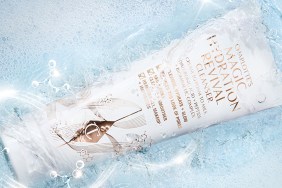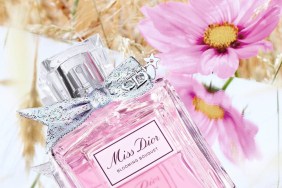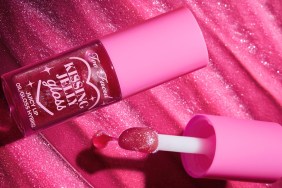
Image: Getty
What goes on your body is certainly as important as what goes inside. Understanding cosmetic ingredients can sometimes be confusing, however. Especially since a scary-sounding ingredient can absolutely be good for you. Like a health-boosting vitamin, mineral or compound.
You obviously shouldn’t have to be a master chemist to sort out the harmful from the benign. Or to figure out what’s just marketing. Besides who has the time to look all that stuff up?
So we put together an A to Z cheat sheet of tricky cosmetic ingredients.
Acetone: A colorless, liquid solvent that dissolves nail polish, paint or glue.
Alcohol: SD alcohol or ethyl alcohol transports other ingredients deeper into skin. It can also tighten pores and dissolve oil.
Alguronic Acid: A proprietary blend of algae extracts that minimizes wrinkles and firms skin.
Allantoin: A natural compound in animals and plants. It can reproduce skin cells and boasts therapeutic and soothing properties.
Alpha Hydroxy Acids (AHAs): Naturally occurring acids, like glycolic, lactic or citric. They loosen the fluid that binds surface skin cells together. They are definitely effective at unclogging pores. Not to mention removing blackheads, brightening along with minimizing wrinkles.
Amino Acids: Building blocks of the proteins that make up collagen and elastin.
Anti-Aging: Ingredients that claim to combat the ravages of time.
Antioxidants: Ingredients that counteract skin-damaging effects of oxidizing agents (aka free radicals).
Arginine: A basic amino acid found in collagen and hair keratin.
Ascorbic Acid: A topical form of vitamin C. It counteracts free radicals, brightens complexions and pumps up collagen.
Avobenzone: A chemical compound in sunscreens to absorb UVA rays. It does not protect skin against UVB rays, however.
Azelaic Acid: An antibacterial and anti-inflammatory agent regulating the production of skin cells. So they won’t build up and clog your pores. It also helps fade dark spots, minimize redness and smooth out uneven complexions.
Benzoyl Peroxide: An acne medication that destroys bacteria and unclogs pores.
Beta Hydroxy Acid (BHA): Chemical exfoliators like salicylic acid that penetrate into skin. They minimize wrinkles, whisk away dead skin cells and unplug pores.
Ceramides: Fatty substances and the glue that holds skin cells together. They help reinforce skin’s protective barrier.
Coenzyme Q10: An antioxidant that improves texture and maintains cell functions.
Dimethicone: A hydrating silicone with protective properties.
Fragrance–Free: No fragrances are added to the product. It doesn’t mean the product won’t have a scent.
Free Radicals: Unstable molecules that can cause cellular damage.
Glycerin: An inexpensive humectant that moisturizes skin.
Glycolic Acid: An alpha hydroxy acid derived from sugarcane.
Humectants: Hydrating ingredients that draw moisture from the air to your skin.
Hyaluronic Acid: Increases skin’s moisture content, plumps it up and prevents water loss.
Hydroquinone (HQ): Inhibits melanin production to lighten dark spots and hyperpigmentation.
Hypoallergenic: Great for sensitive skin types.
Idebenone: A synthetic antioxidant that minimizes inflammation and UV damage.
Kojic Acid: Inhibits melanin production. It’s gentler than hydroquinone for clearing up dark spots and evening out skin tone.
Lactic Acid: A gentle alpha hydroxy acid from fermented milk.
Lycopene: An antioxidant commonly found in tomatoes and watermelon that protects skin from sun damage.
Mandelic Acid: A gentle, oil soluble alpha hydroxy acid that combats acne and hyperpigmentation.
MMPi.20: Inhibits the formation of enzymes that break down collagen and harm skin.
Natural: An unregulated term. Usually it means that some natural ingredients are present. Nevertheless a product can still contain up to 30 percent synthetic ingredients.
Non-Acetone: Polish removers that contain ethyl acetate or nethyl ethyl keytone. They are gentler to your nails than acetone polish removers, but less efficient.
Noncomedogenic: A skin care product containing ingredients that won’t block your pores.
Nontoxic: A product that is generally safe.
Organic: Grown and processed in an ecologically-friendly manner. So no pesticides, fertilizers, toxic chemicals or genetically-modified organisms. To be certified USDA organic, a product must contain a minimum 70 percent organic ingredients. It must also be free from harmful chemicals, non-organic and GMO additives.
Panthenol: A B vitamin that strengthens hair and skin.
Parabens: Chemical preservatives that prevent bacteria growth. They can interfere with the body’s hormones and may be carcinogenic. Common parabens are butylparaben, methylparaben, propylparaben along with alkyl hydroxy benzoate.
Peptides: Amino acid chains that form proteins that help repair and strengthen skin.
Phloretin: A chemical in apples that minimizes sun damage.
Phthalates: Chemical compounds used as lubricants. Phthalates can be hormone disruptors and can affect growth, metabolism along with fertility.
Retinol: A potent vitamin A molecule in anti-aging products. It minimizes fine lines and wrinkles, diminishes hyperpigmentation and boosts collagen production. It can irritate sensitive skin.
Salicylic Acid: A beta hydroxy acid that unplugs pores and whisks away dead surface skin cells.
Sulfate-Free: Sulfates are harsh detergents comprised of mineral salts, such as sodium lauryl sulfate or sodium laureth sulfate.
Sun Protection Factor (SPF): The percentage of UVB rays, not UVA rays, that a sunscreen blocks. SPF 15 guards against 93 percent of UVB rays, SPF 30 97 percent and SPF 50 98 percent.
Titanium Dioxide: A mineral compound serving as a physical blocking component in sunscreen.
Unscented: Products marked unscented usually have a fragrance additive.
UVA/UVB: Different frequencies of ultraviolet rays that cause photodamage. UVB are short waves damaging the superficial layers of skin. UVA are long waves penetrating deeper into skin. Thus breaking down collagen and elastin.






